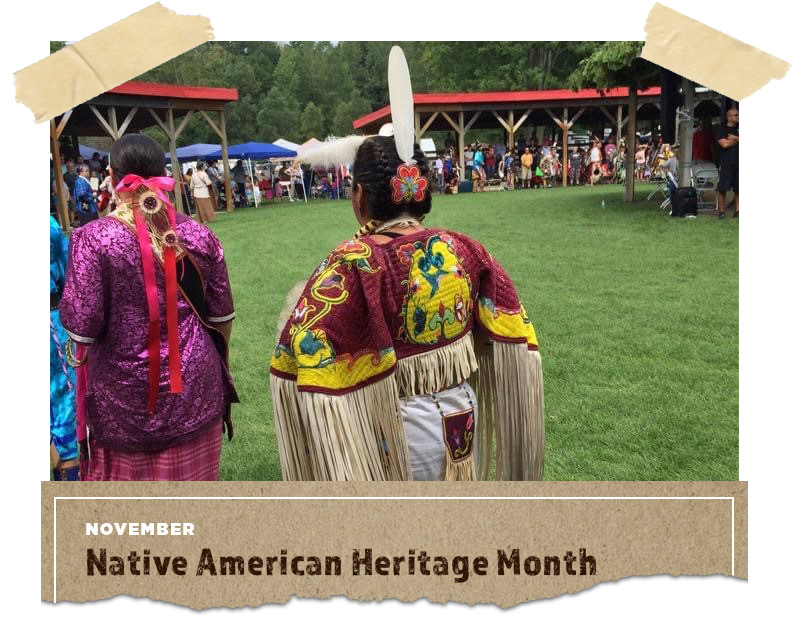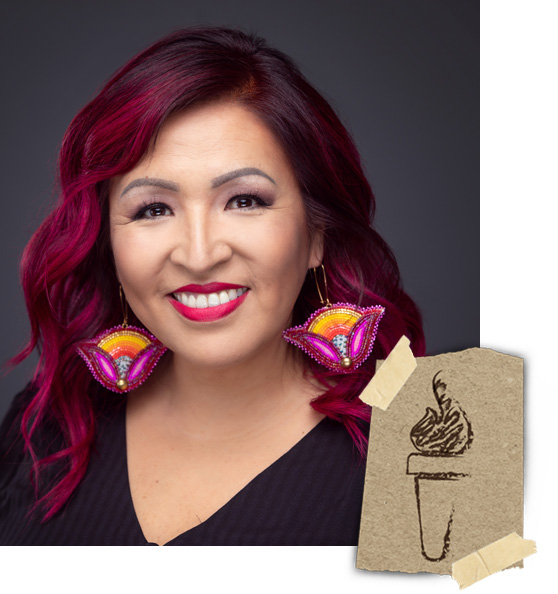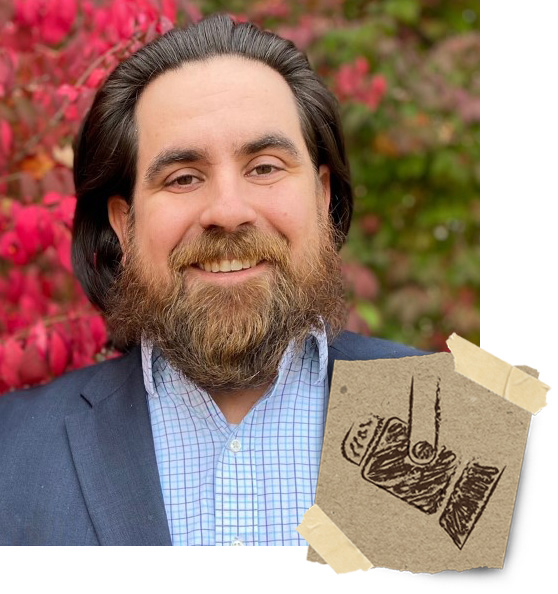National Native American Heritage Month

Angie Sanchez dances at Dowagiac, MI Powwow in traditional regalia. Photo credit: David Martin.
This month, we celebrate "National Native American Heritage Month" which recognizes the significant contributions that the first Americans made to the establishment and growth of the United States.

Diversity Champion
Faculty/Staff
Dr. Susan Sleeper-Smith
Dr. Susan Sleeper-Smith is a professor in the MSU Department of History, as well as the Department of American Indian and Indigenous Studies in the College of Arts and Letters.

Diversity Torch
Student
Angie Sanchez
Angie Sanchez is a member of the Grand Traverse Band of Ottawa and Chippewa Indians, and is a second-year PhD student in the MSU Department of Geography, Environment, and Spatial Sciences.

Diversity Spotlight
Alumni
Dr. Adam Farero
Dr. Farero is an MSU alumnus, a researcher, and a marriage/family therapist, whose scholarship focuses on mental health among military families. He also is an assistant professor in the MSU Department of Human Development and Family Studies.
Photo Gallery
Chippewa hood, ca.1840. Wool, glass beads, and silk ribbon. American School (19th century)/ Detroit Institute of Arts, USA/Founders Society Fund Purchase with funds from Funders Junior Council/ Bridgeman Images.
Shawnee coat. Courtesy, Minnesota Historical Society, no.66.27.1
Miami skirt. Ring brooches and cutwork applied to black wool trade blanket, tied at the waist and opened in front. A trade blouse or shirt was worn on top of the skirt. Cranbrook Institute of Science. Photograph by Tom Stapleton.
Linen shirt with pierced brooches, Worn by Miami, Shawnee, and Potawatomi women and men. The brooch is ten centimeters in diameter. Hebenstreit Collection, Ethnololgisches Museum, Staatliche Museen, Berlin, Art Resource. NY.
Te-quoc-yaw or Bouriette-Indian Interpreter by George Winter, Tippecanoe County Historical Association, Lafayette, Indiana. Gift of Mrs. Cable G. Ball.
Yvonne Walker Keshick with her granddaughter teaching quillwork on birch bark at the Great Lakes Folk Festival, East Lansing, August 8, 2015. Photo by Pearl Yee Wong.
Additional Resources
-
Academic Readings
-
Brown, Dee (1970). Bury My Heart at Wounded Knee: An Indian History of the American West. New York. Open Road Media.
-
Brown, Kirby. 2018. Stoking the Fire: Nationhood in Cherokee Writing, 1907-1970.
Norman: University of Oklahoma Press. -
Calloway, Colin G. (2012). First Peoples: A Documentary Survey of American Indian History, 4th edition. New York. Bedford-St. Martins.
-
Chamberlain, Kathleen P. (2000). Under Sacred Ground: A History of Navajo Oil, 1922-1982. Albuquerque. University of New Mexico Press.
-
Child, Brenda J. (Red Lake Ojibwe). “The Boarding School as Metaphor,” Journal of American Indian Education 57, no. 1 (Spring 2018): 37-57.
-
Deloria, Philip J. 1998. Playing Indian. New Haven: Yale University Press.
-
Devens, Carol. (1986). “Separate Confrontations: Gender as a Factor in Indian Adaptation to European Colonization in New France.” American Quarterly 38, no. 3, 461-480.
-
Farella, John R. (1984). The Main Stalk: A Synthesis of Navajo Philosophy. Tucson. University of Arizona Press.
-
Garroutte, Eva Marie. 2003. Real Indians: Identity and the Survival of Native America.
Berkeley: University of California Press. -
Jacobs, Margaret D. 2014. A Generation Removed: The Fostering and Adoption of
Indigenous Children in the Postwar World. Lincoln: University of Nebraska Press. -
Lowery, Malinda Maynor (Lumbee). “Racial Science and Federal Recognition: Lumbee Indians in the Jim Crow South,” in Recognition, Sovereignty Struggles, and Indigenous Rights in the United States: A Sourcebook, ed. Amy E. Den Ouden and Jean O’Brien (Chapel Hill: University of North Carolina Press, 2013): 65-94.
-
Merritt, Jane, T. (1997). "Dreaming of the Savior's Blood: Moravians and Indians and the Great Awakening in Pennsylvania." William and Mary Quarterly 54, no. 4, 723-746.
-
Riding, James. (2002). “The United States v. Yellow Sun et al. (The Pawnee People): A Case Study of Institutional and Societal Racism and U.S. Justice in Nebraska from the 1850s to 1870s,” Wicazo Sa Review 17, no. 1, 13-41.
-
Rosier, Paul C. “‘They Are Ancestral Homelands’: Race, Place, and Politics in Cold War Native America, 1945-1961,” The Journal of American History 92, no. 4 (March 2006): 1300-1326.
-
Sleeper-Smith, Susan. (2018). Indigenous Prosperity and American Conquest: Indian Women of the Ohio River Valley, 1690-1792. Chapel Hill. University of North Carolina Press.
-
Smithers, Gregory D. (2015). The Cherokee Diaspora: An Indigenous History of
Migration, Resettlement, and Identity. New Haven: Yale University Press.
-
-
General Public
-
Belin, Esther (Diné). (1999). “Blues-ing on the Brown Vibe” https://www.poetryfoundation.org/ poems/53453/blues-ing-on-the-brown-vibe. https://www.poetryfoundation.org/poets/esther- belin.
-
In Whose Honor? American Indian Mascots in Sports (1997), film, available on Netflix.
-
White Shamans and Plastic Medicine Men (1996), film, available on YouTube.
-
Make Prayers to the Raven (1987, 2007), film.
-
Silko, Leslie Marmon (1977). Ceremony. New York. Penguin.
-
Standing Bear, Luther (1933). Land of the Spotted Eagle. Lincoln. University of Nebraska Press.
-
Smithers, Gregory. “Why Do So Many Americans Think They Have Cherokee Blood?”.
Slate. October 1, 2015.
https://slate.com/news-and-politics/2015/10/cherokee-blood-why-do-so-many-americans-believe-they-have-cherokee-ancestry.html
-

